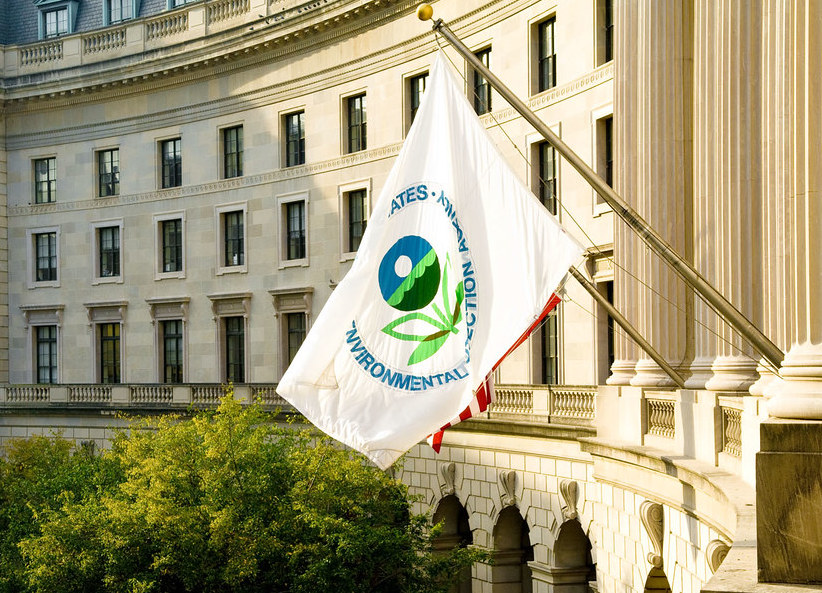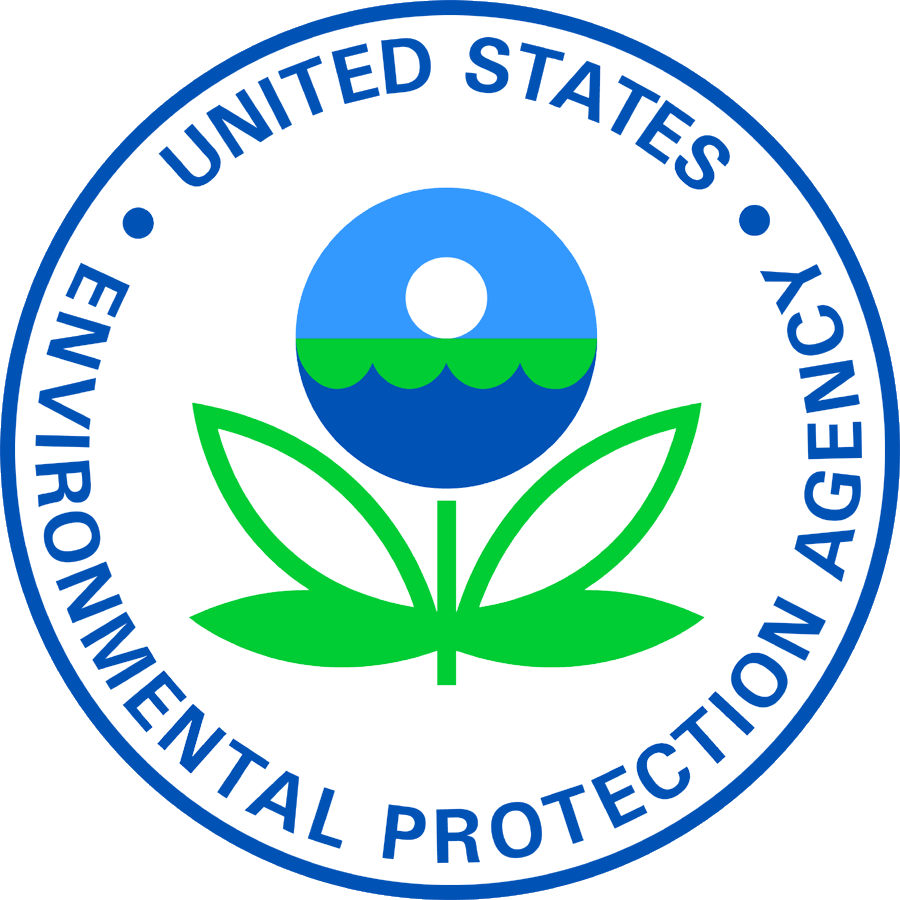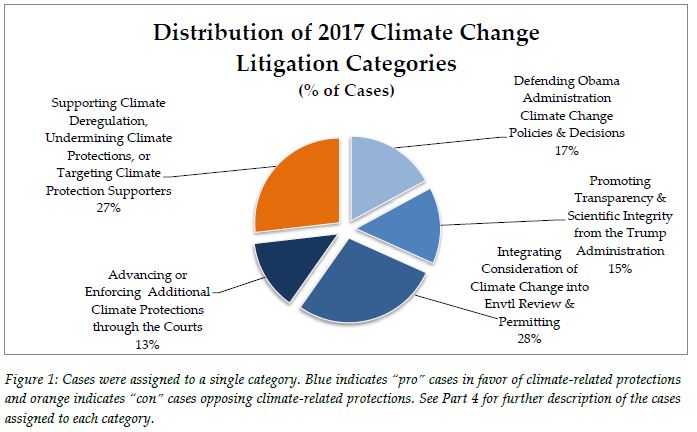By Romany Webb
 Last Thursday, March 26, the Environmental Protection Agency (EPA) announced a temporary policy on environmental enforcement during the COVID-19 pandemic. The policy declares that EPA will “exercise enforcement discretion” – code for “take no action” – in relation to certain civil violations of environmental law “caused by COVID-19.” The policy identifies several situations in which COVID-19 may be considered the cause of a violation, including where a regulated entity’s ability to comply with environmental law is impacted by travel restrictions or social distancing requirements imposed to manage the pandemic, or worker shortages resulting from it. According to the policy, because these and other consequences of the pandemic could prevent regulated entities from complying with routine monitoring, reporting, and similar requirements, EPA “does not expect to seek penalties for violations” thereof.
Last Thursday, March 26, the Environmental Protection Agency (EPA) announced a temporary policy on environmental enforcement during the COVID-19 pandemic. The policy declares that EPA will “exercise enforcement discretion” – code for “take no action” – in relation to certain civil violations of environmental law “caused by COVID-19.” The policy identifies several situations in which COVID-19 may be considered the cause of a violation, including where a regulated entity’s ability to comply with environmental law is impacted by travel restrictions or social distancing requirements imposed to manage the pandemic, or worker shortages resulting from it. According to the policy, because these and other consequences of the pandemic could prevent regulated entities from complying with routine monitoring, reporting, and similar requirements, EPA “does not expect to seek penalties for violations” thereof.
The COVID-19 policy defines “routine requirements” to include those imposed by EPA’s Greenhouse Gas Reporting Program (GHGRP), under which approximately 9,000 entities are required to report annually on their greenhouse gas emissions. Reports are ordinarily due by March 31 but, under the policy, entities will not be penalized for late submission. While entities will be required to “catch up” on missed reports when the policy is lifted, the delay could have significant consequences, limiting public access to information that is needed to assess pending regulatory proposals, aimed at weakening existing greenhouse gas emissions controls.
Briefly, by way of background, the GHGRP was established in 2009 after Congress authorized funding for EPA to develop rules requiring mandatory reporting of greenhouse gas emissions in the FY2008 Consolidated Appropriations Act. The joint explanatory statement accompanying the Act directed EPA to require emissions reporting by both “downstream sources” and “upstream production” facilities. As a result, the GHGRP applies to entities that directly emit greenhouse gases, as well as entities that supply fossil fuels and/or industrial gases, which generate emissions when used. There is an exemption for small facilities that directly emit, and suppliers whose products generate, less than 25,000 metric tons of carbon dioxide-equivalent per year.
Direct emitters subject to the GHGRP must report their emissions of carbon dioxide, methane, nitrous oxide, and fluorinated gases to EPA annually. EPA also receives annual reports from fossil fuel and industrial gas suppliers, showing the amount of each greenhouse gas emitted by combustion or use of the products they supplied, imported, or exported during the year. The reported data cover approximately 85 to 90 percent of all anthropogenic greenhouse gas emissions in the U.S.
Access to such comprehensive emissions data is extremely useful to EPA, enabling it to assess the adequacy of its existing greenhouse gas regulations, and identify areas where further regulatory action may be needed. EPA also intends the data to be used by outside stakeholders and therefore makes it publicly available in various formats. One of the most useful is the Facility Level Information on Greenhouse Gases Tool (FLIGHT), a searchable website that allows users to view and download data for individual facilities and groups of facilities. According to EPA, the granularity of the FLIGHT data allows “communities to identify nearby sources of greenhouse gas emissions, help[s] businesses track and identify cost—and fuel—saving opportunities, . . . and provide[s] important information to the finance and investment communities.”
EPA also compiles the GHGRP data, along with other information, in its annual Inventory of U.S. Greenhouse Gas Emissions and Sinks (Inventory). Published to fulfill the U.S.’ obligations under Article 4 of the Senate ratified United Nations Framework Convention on the Climate Change, the Inventory provides a comprehensive accounting of national anthropogenic greenhouse gas emissions back to 1990. It is, therefore, a useful tool for tracking changes in emissions over time. (While myself and others have raised concerns about the accuracy of some data reported in the Inventory, it is the best, most complete source of emissions information currently available.)
Unfortunately, EPA’s COVID-19 policy jeopardizes continued, timely access to both the Inventory and the underlying data. Absent the policy, reporting entities would have had to submit their 2019 emissions data by yesterday, March 31. The data would then be verified by EPA and uploaded to FLIGHT in October. After further data processing and analysis, EPA would publish a draft Inventory for the period from 1990 to 2019 next February, and a final version next April. Due to the time required for data verification, processing, and analysis, any delay in the initial data submission will invariably push back publication. That’s a problem given EPA’s regulatory agenda.
EPA is currently in the process of finalizing several regulatory proposals aimed at weakening existing greenhouse gas emissions controls. Just yesterday, EPA issued its final Safe Affordable Fuel Efficient (SAFE) Vehicle Rule, rolling back fuel economy and tailpipe emissions standards for model year 2021-2026 light-duty vehicles. Several other roll backs are also pending. The 2019 emissions data could help inform assessment of the proposals by both EPA and outside stakeholders. But it may not be available in time.
To understand what this might mean, consider what the previous year’s data revealed: after declining steadily for five years, power plant emissions increased in 2018. The Trump administration claims that was a one-off blip, but we won’t know until the 2019 data is published. If the data show emissions continuing to increase, it would raise further questions about the administration’s approach to climate change, particularly EPA’s decision to weaken regulatory controls on existing power plants.
While hiding inconvenient facts may not be the intention behind EPA’s COVID-19 policy, it could very well be its effect. The policy thus plays neatly into the Trump administration’s broader efforts to suppress and downplay information that could engender opposition to its roll back of climate change regulations. Our Silencing Science Tracker records 194 attempts by the administration to limit scientific research on, and discussion of, climate change. EPA took nearly a quarter of the recorded actions—more than any other agency. With its new COVID-19 policy, EPA seems to be further cementing its leading role in President Trump’s war on information.





